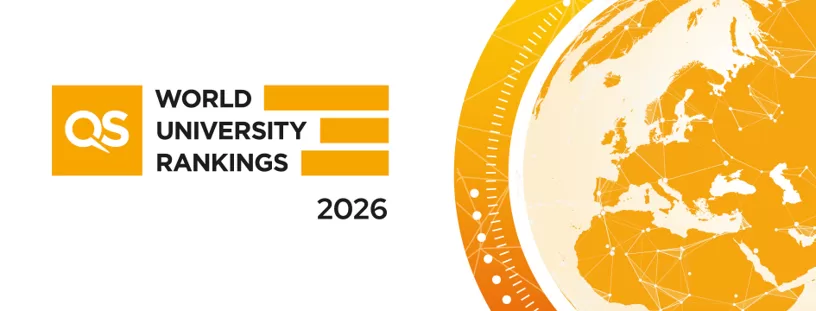
Written by Laura Lightfinch for QS Insights Magazine.
Higher education plays a huge role in the understanding and advancement of AI through vital research and in shaping discussions through higher education conferences and in the media. Though, when it comes to incorporating AI into the university experience, regulation and legislature can make it difficult for higher education institutions to simply pivot and start delivering the technologically advanced provision we know is possible.
The QS Generative AI Academic and Student Surveys 2023 revealed that four out of five students are using generative AI during their studies and over two-thirds of students who are very or extremely familiar with Generative AI tools say it’s extremely important to incorporate the technology in the curriculum.
While 69 percent of academics agree that it’s essential for universities to incorporate generative AI into the student experience, however, only 26 percent have done so. Of course, while students and academics are keen to incorporate generative AI, it is one element of the possible use cases for AI in higher education.
As corporations and start-ups deliver new intelligence at pace, AI has dominated much of the conversation in higher education thought leadership and news over the past year, with a rallying cry for universities to ‘catch up’. Somayeh Aghnia, Co-founder and Chair of the London School of Innovation, writes in HEPI that “the AI divide threatens to widen the gap between those who can learn AI through alternative means and those dependent on a formal education system”.
“Without significant reforms,” Somayeh says, “students in schools and universities… will lag far behind their peers who have access to more dynamic learning environments. They will then graduate and enter the workforce with the same growing gap, not only falling behind in securing good jobs but directly impacting how our whole economy navigates this transitional and transformational time of realigning and rebuilding itself for the AI-powered future.”
The question is, do universities have enough guidance on how to incorporate AI and is there such thing as a replicable model?

The path to AI-enabled education
According to Monica Arés, Executive Director of Innovation, Digital Educaton, and Analytics (IDEA) Lab at Imperial College Business School in the UK, higher education institutions already have the most important foundational piece.
Speaking at the QS EduData Summit 2024 in Washington D.C. earlier this year, Arés says: “We have the data in place to become AI-ready. In the pandemic, we started recording every lecture. We added course materials to cloud-based systems and have access to academic interviews and research. So, once we have all the data into a verified knowledge system, we can apply different modalities to the higher education experience.”
With the foundational data in place, universities can develop a multi-faceted approach that ensures AI implementation is both innovative and inclusive, setting a clear path forward for the future of education. Maud Pols moved from academia to become Technology Strategist for Education at Microsoft and is often asked what her advice is to move AI education forward. Her response is “to innovate, collaborate and structurally-integrate”.
Pols recommends that educational providers take a multi-level approach to integrate Generative AI into the curriculum, beginning with institutional strategy:
Strategy – What is the institution-wide mission for advancing tech? How does that relate to in-country, regional and global challenges?
Business – What is the business plan for implementing Generative AI and in which faculties? Which stakeholders need to be involved, and how is it scalable?
Education – How will implementation be accessible for all students beyond a pilot or experiment?
Speaking alongside Pols and Arés at QS EduData Summit 2024, Jessica Turner, CEO of QS, says that the challenge is “moving beyond the individual pilots and experimentation to integrating a whole education system that can benefit from AI technology in a way that brings equity, access and therefore empowers motivated people to be able to succeed in a way that bridges the gaps we currently have in the education system.”
In response to the QS Generative AI Student Pulse Survey, one postgraduate biological and sports sciences student says: “We need to look beyond the hype to actual sustainable implementation of AI. What I have been seeing at my university is mostly hype. We should apply different AI tools where they fit the best at their present iterations.”
Amplifying examples of best practice
While higher education is walking the path to AI-enabled education, universities are seeking examples of best practice to guide them towards what’s possible. “They want to know what other universities are doing,” says Pols.
A test ground for students and faculty to experiment
Community demand for Harvard University to meet the emerging AI demands while providing safeguarding against security and privacy deficiencies of consumer tools led to a generative AI ‘sandbox’ environment, launched in 2023, that would enable exploration of different large language models (LLMs) while mitigating the safety risks of consumer tech. IT engineers, architects, and administrators came together to design the secure sandbox and launch a pilot for the start of the academic year.
The Emerging Technology and Innovation Program blazed the way for AI-enabled education by enabling the university to prototype and create the sandbox in weeks. “It was invigorating to watch people from across the university coming together to collaborate with a very focused goal and tight timeline,” says managing director for academic technology at Harvard University, Emily Bottis. The University has since evaluated the pilot to inform institutional strategy and make the learnings available to faculty leaders across the university who can pave the way forward.
Supporting inclusive access to education
At the QS Reimagine Education Awards 2023, Duolingo won gold in the AI in Education Award for the company’s innovation of the Duolingo English Test, which revolutionised English proficiency tests by creating an accessible model that applicants can take anytime from anywhere in the world, within an hour. The Duolingo English Test is a fraction of the cost of other tests, results arrive within two days and students can send them to as many universities as they like, for free. The test is accepted by thousands of universities around the world, increasing accessibility and inclusivity in English testing and enabling more students to realise their dreams.
A safe channel to confide in
Though not all examples of best practice are complex or resource heavy. At Imperial College Business School, the introduction of an AI assistant connected to a programme created a surprising outcome. Arés says: “We discovered that a lot of students were using the AI assistant to ask questions that they were too embarrassed to ask. We did not expect it, but the enabling of better confidence and unlocking information so that students don’t become stuck or restrict themselves from communicating the things they are struggling with, that’s hugely important.”
Enhancing co-created course content
Last year, The Hong Kong Polytechnic University (PolyU) adopted an innovative project in the Department of Social Studies, which involved an immersive virtual environment and digital studio where students and teachers are empowered to co-create their learning experience based on their needs and interests. Content included collaborative videos across a range of topics and the first large-scale X-Reality hybrid classroom in Hong Kong.
Dr Rodney Chu, Senior Lecturer of the Department of Applied Social Sciences at PolyU, says: “Our award-winning project encourages students to understand local district development socially, economically and environmentally by leveraging the power of technology. It also helps teachers embrace interaction and participation in the teaching process, brings innovation to drive teaching and learning, and strengthens the competitiveness of our students.”
Academic-industry partnerships
Arizona State University (ASU) has committed to exploring AI in all its forms, including 19 centres, initiatives and laboratories dedicated to exploring and activating AI models. Earlier in 2024, ASU partnered with ChatGPT to provide students and staff with access to the OpenAI platform as part of their university experience.
“Learning is core to why so many users love ChatGPT. ASU continues to lead in innovation by integrating ChatGPT into its educational programmes,” says OpenAI Chief Operating Officer Brad Lightcap. “We’re keen to learn from ASU and to work towards expanding ChatGPT’s impact in higher education.”
On the path to AI-enabled education, understanding changing behaviours and expectations of applicants, students and employers will be vital in successful integration.



